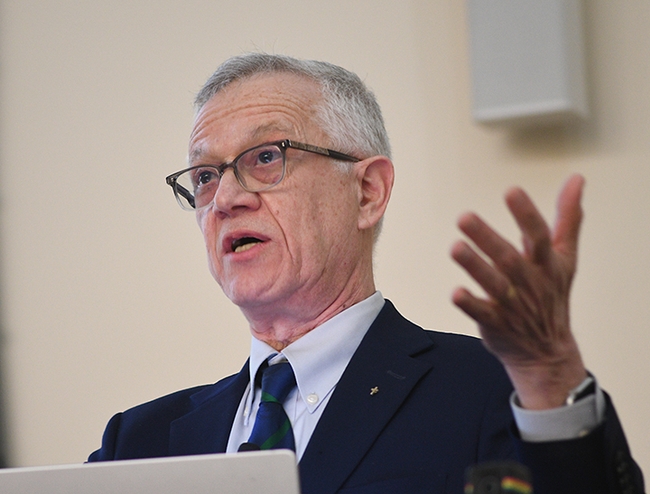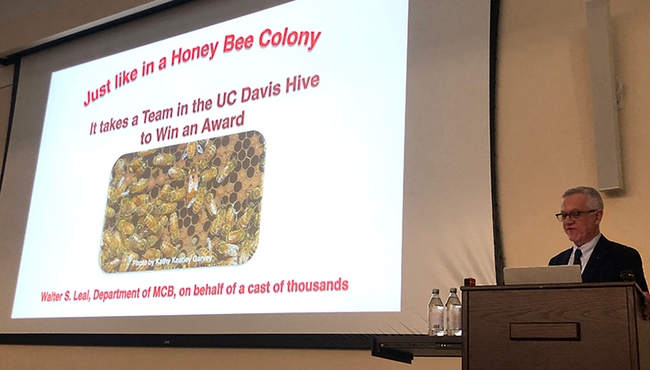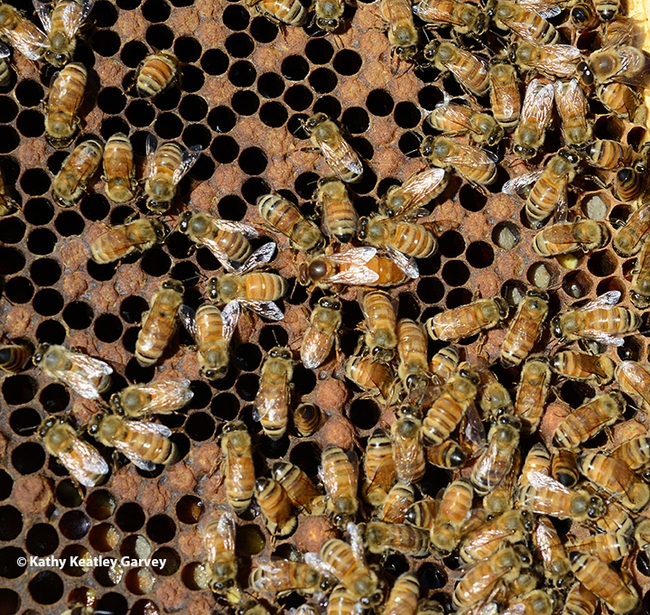
In images, text, and analogies.
“Just like in a honey bee colony, it takes a team to win an award," he said, and graciously proceeded to thank all those who made it possible. Family, friends, students, postdoctoral fellows, colleagues, staff and more. Or, as he said "work performed by the cast of thousands deserve the distinguished research award."
Leal, former professor and chair of the Department of Entomology (now the Department of Entomology and Nematology) joined the Department of Molecular and Cellular Biology faculty in 2013. He is first UC Davis faculty member to win Academic Senate's trifecta of coveted awards: Distinguished Teaching Award for Undergraduate Teaching (2020), Distinguished Scholarly Public Service Award (2022) and now, the Faculty Distinguished Research Award.
A week before the seminar, Leal was elected to the National Academy of Sciences.
“Dr. Leal is an internationally recognized entomologist and a world leader in his field for his groundbreaking and transformative research in insect olfaction and chemical ecology,” said UC Davis distinguished professor Bruce Hammock, who nominated Leal for the Faculty Distinguished Research Award.
Leal credits Hammock, a 25-year friend and colleague, as instrumental in “luring” him from his tenured position in the Ministry of Agriculture, Forestry, and Fisheries, Japan, to the Department of Entomology (now the Department of Entomology and Nematology) in 2000. A native of Brazil, Leal received his Ph.D. in applied biochemistry from the University of Tsukuba, Japan, with subsequent postdoctoral training in entomology and chemical ecology at the National Institute of Sericultural and Entomological Science and Cornell University, respectively.
In his letter of nomination, Hammock pointed out "I especially applaud him for elucidating the mode of action of the insect repellent DEET, developed in 1946 and known as ‘the gold standard of repellents.' Its mode of action remained an enigma for six decades until Walter's discovery. In researching the neurons in mosquito antennae sensitive to DEET, he isolated the first DEET-sensitive odorant receptor, paving the way for the development of better repellents.”
Leal's analogy of bees working together to succeed, just like what occurs in a successful lab, is spot on. The worker bees inside the hive perform specific duties: nurse maids, nannies, royal attendants, builders, architects, foragers, dancers, honey tenders, pollen packers, propolis or "glue" specialists, air conditioning and heating technicians, guards, and undertakers.
As an aside, Leal mentioned that one research project in his lab involved his daughter Helena, honey bees and her shampoo. “Helena always said the bees were bothering her and then when we collected the volatiles from her, we noticed that there was a contaminant, isoamyl acetate,” Leal told the crowd. “To make a long story short, isoamyl acetate is a chemical that elicits a very aggressive behavior. It's called a sting pheromone known from the early 1960s, and we figured out that that chemical was coming from a shampoo that she was using at that time--the so-called Aussie. So, she stopped using that shampoo and there was no problem with the bees anymore.”
Read more about his lecture here and watch his lecture at https://youtu.be/HkfhsYQE5bI.
Attached Images:

